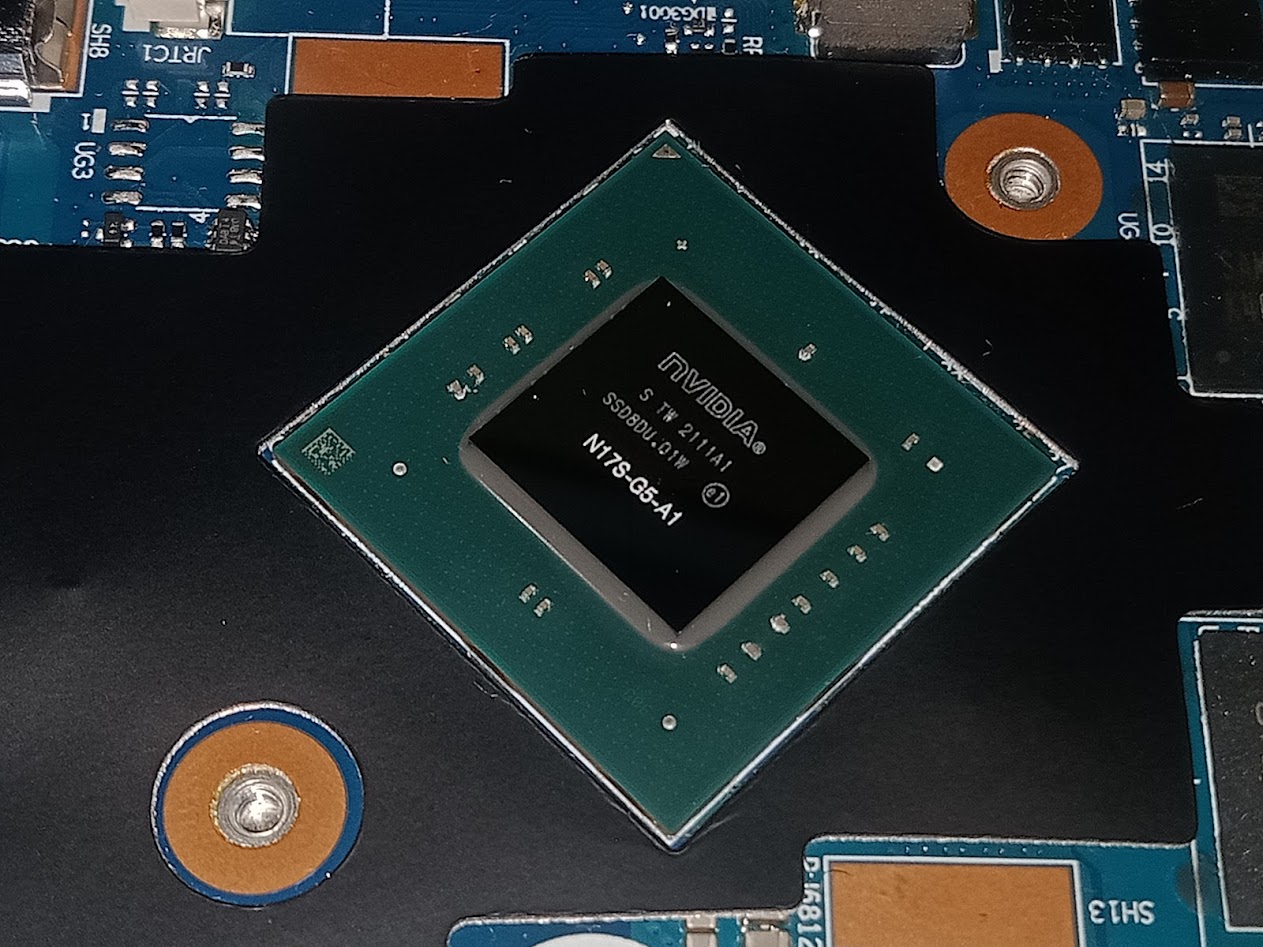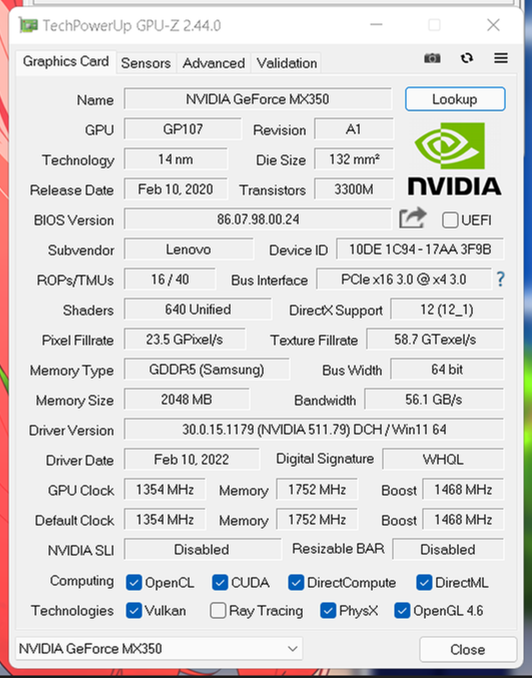Comparing: SanDisk Ultra Dual Drive Go OTG USB Type-C USB 3.1 128GB vs GeForce MX350 [Disk]
In this comparison, we analyze two Disks: SanDisk Ultra Dual Drive Go OTG USB Type-C USB 3.1 128GB and GeForce MX350 [Disk], using synthetic benchmark tests to evaluate their overall performance. This side-by-side comparison helps users understand which hardware delivers better value, speed, and efficiency based on standardized testing. Whether you're building a new system or upgrading an existing one, this benchmark-driven evaluation offers valuable insights to guide your decision.

SanDisk Ultra Dual Drive Go OTG USB Type-C USB 3.1 128GB
| Type: | Disks |
|---|---|
| Model: | Ultra Dual Drive Go OTG USB Type-C USB 3.1 128GB |
| Capacity: | 128GB |
| Interface: | USB Type-A 3.1 Gen 1 & USB Type-C 3.1 Gen 1 |

GeForce MX350 [Disk]
| Type: | Disks |
|---|---|
| Model: | GeForce MX350 [Disk] |
| Capacity: | 2GB, 1.5GB |
| Interface: | GDDR5 |
Specification Comparison Table
This specification comparison presents technical details of several devices or components to help you understand the key differences between each option. Use this table as a reference to determine which device best suits your needs.
| Specification | SanDisk Ultra Dual Drive Go OTG USB Type-C USB 3.1 128GB | GeForce MX350 [Disk] |
|---|---|---|
| Brand | SanDisk | Samsung |
| Format | USB FlashDrive | VRAM Disk |
| Capacity | 128GB | 2GB, 1.5GB |
| Interface | USB Type-A 3.1 Gen 1 & USB Type-C 3.1 Gen 1 | GDDR5 |
Submission Comparison Table
This submission comparison table displays the number and details of benchmark data submissions from various devices or components. This information helps you understand the performance based on the benchmarks that have been tested, as well as providing an overview of the consistency and popularity of the available benchmark results.
| No. | Benchmark Software | SanDisk Ultra Dual Drive Go OTG USB Type-C USB 3.1 128GB | GeForce MX350 [Disk] |
|---|---|---|---|
| 1 | ATTO Disk Benchmark - 64M |
Read: 82.05 MB/s Write: 23.02 MB/s |
Read: 1440.00 MB/s Write: 1330.00 MB/s |
| 2 | CrystalDiskMark |
Read: 155.93 MB/s Write: 74.86 MB/s |
Read: 1113.58 MB/s Write: 995.48 MB/s |
Submission Comparison Chart
This chart visualizes the benchmark scores comparison between two hardware devices based on submitted data.
Media Gallery
A collection of photos of tested hardware. These images can help you identify the physical form, model, and variant of the hardware in question. These photos are from our own documentation, and if they are not available we may not be able to document them.
About Hardware SanDisk Ultra Dual Drive Go OTG USB Type-C USB 3.1 128GB
The SanDisk Ultra Dual Drive Go 128GB is a versatile OTG flash drive with USB Type-C and USB Type-A support, enabling easy data transfer between devices such as smartphones, tablets and laptops. The flash drive offers transfer speeds of up to 150MB/s, making it ideal for fast and efficient transfer of large files.
In tests conducted using the Lenovo IdeaPad Slim 3i 14ITL6 with 12GB DDR4 dual channel RAM and Windows 11 22H2 operating system, as well as connectivity via USB 3.1 Gen 1 port, the device performed quite well under real-world usage conditions.
Test results through CrystalDiskMark recorded a read speed of 155.93 MB/s and a write speed of 74.86 MB/s. Meanwhile, through ATTO Disk Benchmark (64M test), the device recorded a read speed of 82.05 MB/s and a write speed of 23.02 MB/s. Although it does not touch the maximum theoretical limit, this performance is perfectly sufficient for daily needs such as transferring documents, photos, and medium-sized videos.
With its compact design and dual connectors, the SanDisk Ultra Dual Drive Go is an efficient and practical portable storage solution, perfect for cross-device users who need speed and flexibility.
Device Test:
Device: Lenovo IdeaPad Slim 3i 14ITL6
RAM: 12GB DDR4 3200MHz Dual Channel (8+4)
OS: Windows 11 22H2
USB: USB 3.1 Gen 1
Sunday, 29 May 2022 04:57:37 | Update: 1 month ago
About Hardware GeForce MX350 [Disk]
The NVIDIA GeForce MX350 is an entry-level GPU designed for thin and light laptops, delivering significant graphics performance improvements over the processor's built-in iGPU. The GPU is based on the Pascal architecture with 640 CUDA Cores, and features 2GB or 4GB of GDDR5 memory with 64-bit bus width. The MX350 is generally used for light graphics tasks such as photo editing, light video, and casual gaming, and provides GPU acceleration for CUDA-enabled creative applications.
But in this particular test, a portion of the video memory (VRAM) on the GeForce MX350 was configured as a VRAMDisk. The concept of a VRAMDisk is similar to a RAMDisk, but it uses the VRAM of the GPU as a super-fast storage medium. VRAMDisk allows the creation of temporary, high-speed drives that can be utilized for technical experiments, speed testing, or graphics caching in certain scenarios. Although its capacity is limited and volatile (data is lost on reboot), the high bandwidth and low latency of VRAM provide compelling performance in certain contexts.
The tests were conducted on a Lenovo IdeaPad Slim 3i 14ITL6 laptop with Intel Core i5-1135G7 processor, 12GB DDR4 3200MHz dual channel RAM, and Windows 11 22H2 operating system. The VRAMDisk was created from a 2GB GeForce MX350 GPU, with virtual disk sizes of 1GB and 1.5GB, using special software called GPU RAM Drive.
Benchmark results with CrystalDiskMark recorded read speeds of 1113.58 MB/s and write speeds of 995.48 MB/s, showing the high bandwidth potential of VRAM as a temporary storage medium. Although the performance does not match DDR4-based RAMDisks, VRAMDisks remain a unique and attractive solution for certain technical purposes, especially for users who want to utilize idle VRAM for fast I/O processes. With its dedicated laptop GPU form factor and PCIe x4 Gen 3.0 interface, the GeForce MX350 VRAMDisk opens up new exploration possibilities in the world of experimental graphics-based high-speed storage.
Device test (testbed):
Device: Lenovo IdeaPad Slim 3i 14ITL6
CPU: i5 1135G7
RAM: 12GB DDR4 3200MHz Dual Channel (8+4)
OS: Windows 11 22H2
Friday, 06 August 2021 04:34:19 | Update: 1 month ago

